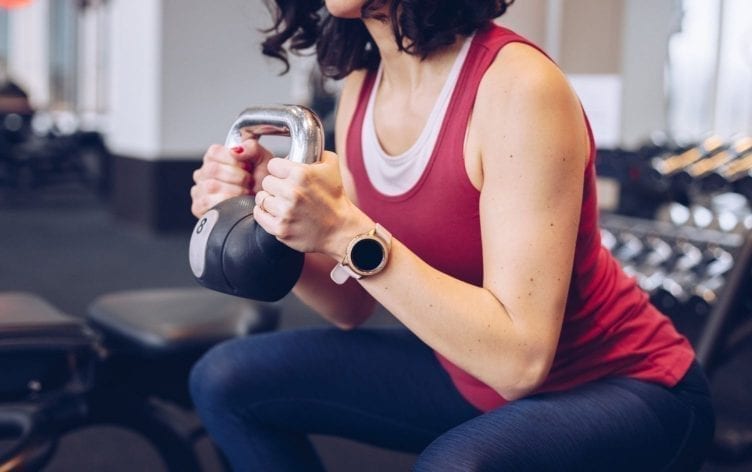
According to the CDC National Health Survey, about half of all Americans try to lose weight at some point during a given year, making it one of the most common goals. This endeavor can be a healthy objective for people who can benefit from dropping pounds, but your weight doesn’t paint the whole picture.
Body weight, and particularly BMI, are not the most accurate measures of health. Two people weighing the same amount can have vastly different body compositions, and BMI calculators do not take into account one’s percentage of muscle versus fat.
However, when you’re trying your best to eat healthy and work out, it’s understandable you want to measure your progress. If the scale isn’t telling you what you want to know, these seven metrics can help you to identify and notice improvements.
1
IMPROVED CARDIOVASCULAR ENDURANCE
Cardiovascular endurance is a measure of how efficiently your body uses oxygen during exercise. If you really want to get into the details, you can get your VO2 max measured at a sports medicine facility or medical lab that offers stress tests. But fortunately, there’s an easier (albeit less exact) way to tell how your cardio’s faring.
Use a heart rate monitor during exercise to chart your progress, and you may notice your heart isn’t struggling as much as it used to. Or, you may see you’re able to take your workout up a notch, increasing your heart rate without increasing your perceived effort. Another, even simpler test: Can you run or walk farther today than you could one month ago? Did your 5K or mile time improve? If yes, then your endurance and cardiovascular health are improving.
2
INCREASED STRENGTH
Evaluating strength gains is even easier than the cardio-related fact-finding mission described above. In this case, you want to note how much weight you’re lifting, and how many repetitions you can perform at a given weight. If you’re able to add another couple plates to the bench press or perform more reps after a month of regularly working out, you’re getting stronger. You can also measure strength gains with bodyweight exercises like squats and pushups.
3
IMPROVEMENTS IN SPEED AND WORKOUT INTENSITY
Unlike endurance, which is measured over a longer period of time, intensity can be measured over shorter durations. For example: Running a faster 100-yard dash or cramming more burpees into a 30-second interval today than you could before shows you’re making progress.
4
HIGHER ENERGY LEVELS
It’s perfectly normal to be tired — exhausted, even — after a tough workout. But that fatigue is only temporary, and working out actually boosts your energy overall. A University of Georgia study found significant evidence saying exactly that. The researchers analyzed 70 randomized, controlled trials covering nearly 7,000 subjects. Ninety percent of the studies showed sedentary people who completed a regular exercise program reported improved fatigue compared to groups that did not exercise. So, regardless of what the scale says, you can thank your effort in the gym for that extra pep in your step.
5
LOWER BLOOD PRESSURE
Strap on a blood pressure cuff to see if your hard work is paying off. According to a study published in the British Journal of Sports Medicine, exercise may be as effective as prescription medicines in lowering high blood pressure. Best of all, you can stick with your favorite exercises to reap the benefits; HIIT, strength training, and cardio-based activities like walking, running and cycling are all effective at lowering your blood pressure.
6
IMPROVED SLEEP
Ample evidence shows exercise helps you fall asleep faster and improves sleep quality. Per Johns Hopkins Medicine, performing at least 30 minutes of moderate aerobic exercise can result in better sleep quality that same night. Better sleep is something we can all benefit from, and getting adequate sleep is associated with making better food choices and maintaining a healthy weight.
7
FEWER INCHES
If you are gaining muscles and losing fat, your body composition will change and you may notice your clothes fit differently. Because muscle is denser than fat, it takes up less space in your body. If your waist, legs, arms or other areas of your body are getting slimmer, then change is happening, even if that change isn’t evident on the scale.
THE BOTTOM LINE
There’s more than one way to measure progress. If you want to lose weight, but the pounds are coming off slowly, try evaluating another metric like the ones outlined above. They will help you see the whole picture, rather than only what’s visible on the scale. Fitness improvements in endurance and strength are great for your heart, muscles and bones and can entice you to stick with your workout regimen. Combine those factors with lifestyle improvements like higher energy levels and better sleep, and your efforts to eat healthy and exercise will benefit your health long term.
Make progress on nutrition and fitness goals with our “Plans” feature in the MyFitnessPal app for daily coaching and easy-to-follow tasks.
Tagsexpert adviceFitness Tipslosing weight